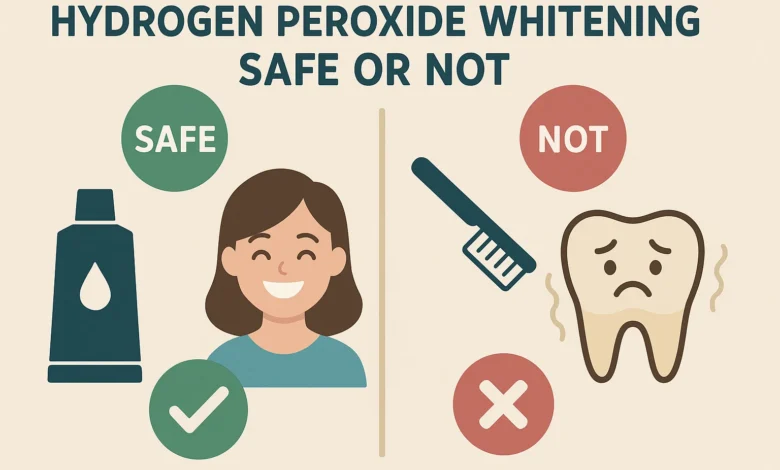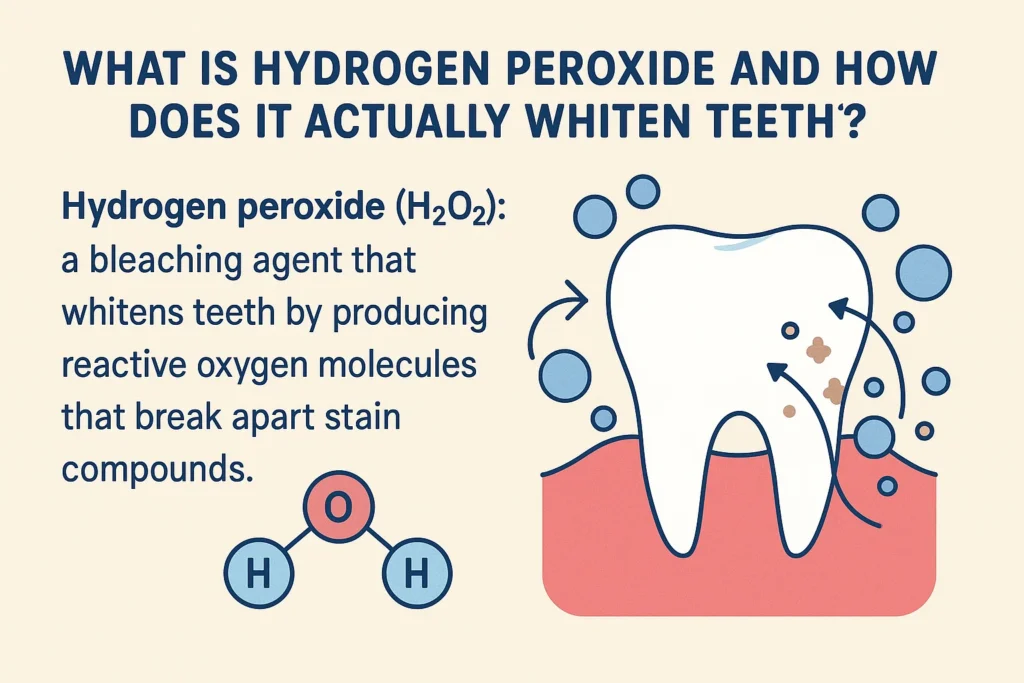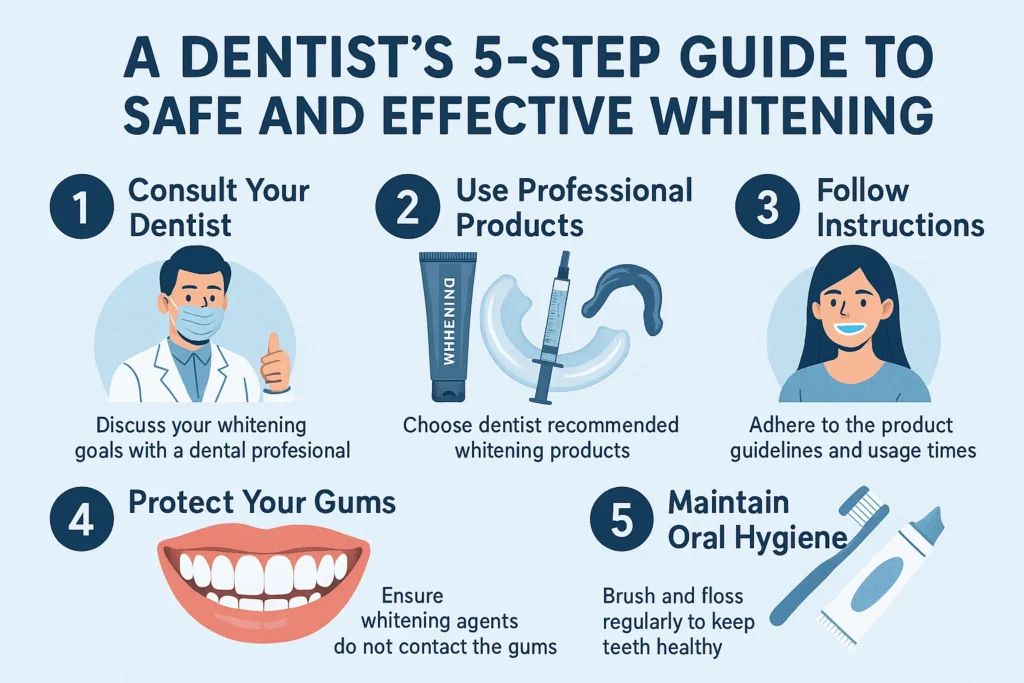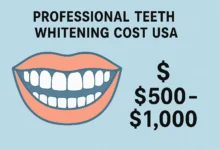Hydrogen Peroxide Whitening Safe or Not? What You Need to Know

Hydrogen Peroxide Whitening Safe or Not? The Definitive 2025 Guide
You have watched the viral Tik Tok videos. You have gone through the Reddit boards. You have looked in your medicine cabinet at the bottle of hydrogen peroxide and said to yourself: Can this really make me have a whiter smile without a visit to the dentist? The question that everyone is asking is very simple and harsh: Is the hydrogen peroxide whitening safe or is it a shortcut that would cost you your dental health?
The web abounds with contradictory information, with some people declaring the internet an effective tool and some telling of unbearable sensitivity and broken enamel. This is an ultimate guide through the noise. Supported by the newest research in the field of dentistry, and professional opinions, we will have an all-encompassing, unbiased examination of the science, risks and truths of using hydrogen peroxide to whiten the teeth. You should not risk your oral health in your quest to get a brighter smile. Let’s find the truth.
What is Hydrogen Peroxide and How Does It Actually Whiten Teeth?

You must first know the mechanism of action in order to know the safety debate. Hydrogen peroxide (H 2 O 2) is an oxidizing agent and antiseptic. When we are talking of the teeth whitening, it is not a scrub that removes stains. Rather it is a chemical reaction.
Your teeth become discolored over time due to two types of stains:
- The Extrinsic Stains: This is those that are found on the surface of your enamel, and are the result of dark coloured foods and beverages such as coffee, red wine and berries and also tobacco use.
- Intrinsic Stains: These are those that take place in the structure of the teeth (the dentin) and they could be brought about by old age, stress, some drugs or too much exposure to fluoride at an early age.Hydrogen peroxide is a bleaching agent. The unstable oxygen molecules attach and enter the porous enamel and fragment the complex, discolored molecules within it. These compounds are very large and dark in color and this oxidation process splits these compounds into smaller colorless parts and basically bleaches the tooth inside out making it appear whiter.
Hydrogen Peroxide vs. Carbamide Peroxide: What’s the Difference?
You’ll often see two main bleaching agents in whitening products:
- Hydrogen Peroxide: It is the active bleaching agent. It is an instant effect and it dissipates its whitening power within a short period of time.
- Carbamide Peroxide: It is a stable compound, which decomposes into urea and hydrogen peroxide. Carbamide peroxide is converted into hydrogen peroxide about one-third. It is less fast-acting, and is most often used in the longer-term at-home whitizing systems.
In essence, both ultimately rely on hydrogen peroxide to do the whitening work.
The Central Question: Is Hydrogen Peroxide Safe to Whiten Teeth?
Here is the nuanced, expert answer you need:
Yes, hydrogen peroxide is usually safe to be used in the teeth whitening process, provided it is applied in reasonable and low doses and with the professional supervision. The efficacy and safety of its formulations have been acknowledged by major associations of dentists in the world such as the American Dental Association (ADA).
But–and here is a very vital however–it is all a question of concentration, frequency, and method of application in regard to safety. When these factors are not taken into consideration, the risks are brought to a very high level.
Let’s break down the safety profile by context.
The Professional Standard: In-Office Whitening
When the dentist whitens in his/her office, it involves the use of high-concentration hydrogen peroxide gels (between 25 and 40 percent). This is what makes dramatic results on one one-hour session. Why then is this supposed to be safe?
Professional Supervision: A dentist gives you protection in the form of barriers over your gums, lips and soft tissues so that they do not burn with chemicals.
Controlled Environment: The gel gets applied in a definite manner and within a limited time.
Expert Evaluation: The first thing that your dentist would make sure is that you have healthy teeth and gums to undergo the treatment.
The At-Home Dilemma: Over-the-Counter vs. DIY
This is where the safety debate gets heated. Regulations vary, but in the US and EU, over-the-counter (OTC) whitening products are legally limited to 0.1% to 6% hydrogen peroxide.
- ADA-Accepted Products: ADA Seal of Acceptance on products is based on proven safety and efficacy on the use as directed. These are your safest OTC bet.
- The most serious of these areas of concern is the Danger Zone, which is the DIY Hack. Dental professionals do not recommend the use of a straight bottle of 3 percent food grade or household hydrogen peroxide to swish or brush teeth. The concentration is not regulated, the pH can be unstable and the method is not precise and this causes unwarranted risks.
The Risks: When Hydrogen Peroxide Whitening is NOT Safe
Ignoring the guidelines can lead to a host of dental problems. Understanding these risks is the first step to mitigating them.
1. Tooth Sensitivity
This is the most prevalent side effect. The peroxide has the potential to temporarily burn the nerve (pulp) of your tooth. This hot, cold, or sweet sensitivity is mostly temporary but may be very brutal to some people.
Useful Hack: Applying a toothpaste with potassium nitrate to the teeth two weeks prior to and during the whitening process can help a lot in eliminating this risk.
2. Burning and Irritation of the Gums and Chemical Burns.
When the bleaching gel touches your gums then this may lead to a reversible chemical burn which presents as a white blotchy and the area may be painful. This is all due to inappropriate use, such as ill-fitting whitening trays or swishing using a peroxide solution.
3. Enamel Demineralization and Damage.
This is the apprehension behind the myth of hydrogen peroxide no longer recommended. The truth is nuanced. The studies have indicated that the use of low-concentration, professionally supervised use does not damage the structural integrity of enamel. Nevertheless, excessive consumption of whitening products such as: frequency, high concentration, and prolonged use may result in:
Enamel Demineralization: Temporal weakening and death of minerals at the enamel surface.
Higher Surface Roughness: Forming microscopic holes which are ironically susceptible to subsequent staining of teeth.
In the Journal of Esthetic and Restorative Dentistry, a review of 2024 established that, although a transient loss of minerals takes place, it is generally replaced through the remineralizing effect of saliva particularly with the use of fluoride.
4. Lopsided Whitening and Technicolor Teeth.
Artificial dentures, such as crowns, veneers, and fillings cannot be whitened by using hydrogen peroxide. When you have such restorations in the front teeth, whitening of your natural enamel will leave you with a disproportionate and not very smooth smile.
5. The Dangers of Ingestion
The necessity of this fact cannot be overestimated: Hydrogen peroxide is not safe to consume. Even ingesting low doses of 3% solution may lead to stomach upsets, vomiting and in rare instances, further internal burning. Ingesting greater amounts is an emergency to the health. Behind the “is it safe to consume hydrogen peroxide” questions, tend to be emanating of dangerous internalization cleansing fads, the trends are not scientific at all and are very unsafe.
Hydrogen Peroxide for Skin Whitening: A Separate and Serious Concern
It is very important to mention a similar and threatening trend. There are people who apply hydrogen peroxide to skin or dark areas in order to lighten them. The warning of dermatologists against this practice is universal. Using H 2 O 2 on the skin may result in:
- Burns, aggravation, and redness (contact dermatitis).
- Alteration in the natural microbiome and barrier by the skin.
- Scarring and irreversible harm to the skin.
There are safer, clinically tested substitutes of hyperpigmentation such as vitamin C serums, retinoids, and professional chemical peels which must be sought with the guidance of a dermatologist.
Safer Alternatives: How to Whiten Teeth Without Hydrogen Peroxide
If the risks of hydrogen peroxide concern you, or if you have extreme sensitivity, several alternative whitening methods exist. The table below provides a quick comparison.
| Method | How It Works | Pros | Cons |
|---|---|---|---|
| Abrasive Toothpastes (e.g., with baking soda or silica) | Physically scrubs away surface stains through mild abrasion. | Inexpensive, easy to use, immediate surface-level results. | Does not change intrinsic tooth color; overuse can wear down enamel. |
| Charcoal Toothpaste/Powders | Claims to adsorb stains, but evidence is limited; primarily abrasive. | Natural appeal, removes some surface stains. | Highly abrasive, can be messy, may not be effective for deep whitening. |
| Over-the-Counter Whitening Strips (with lower peroxide levels) | Uses a thin, flexible strip coated with a safe, low-dose peroxide gel. | Convenient, affordable, better gum protection than DIY methods. | Results can be uneven, may not cover all tooth surfaces. |
| Professional In-Office Whitening (Non-Peroxide Options) | Some dentists offer LED or laser whitening with peroxide-free gels, though these are less common. | Supervised, fast, minimal sensitivity. | Can be expensive, may be less effective than peroxide-based treatments. |
| Preventative Care & Professional Hygiene | Regular dental cleanings remove surface stains and plaque buildup. | Safest option, promotes overall oral health, reveals your natural whiteness. | Does not bleach teeth beyond their natural shade. |
A Dentist’s 5-Step Guide to Safe and Effective Whitening

If you decide to proceed with hydrogen peroxide whitening, follow this expert-approved protocol to maximize safety and results.
Step 1: Get a Dental Check-Up
This is non-negotiable. Visit your dentist before any whitening treatment. They will examine the cavities, the presence of gum disease and the presence of roots that are exposed, all of which may be enhanced by the use of the whitening agents.
Step 2: Selecting the appropriate Product.
Use ADA-Accepted OTC or better still a take-home kit that has been custom made by your dentist. Professional quality safe concentrations of peroxide and trays are included in these kits and they are designed to fit perfectly well to guard your gums.
Step 3: Make a Sensitivity Test.
A patch test should first be performed on a single tooth before applying the product to the whole smile to determine the level of sensitivity.
Step 4: Strict Obedience of Instructions.
More is not better. Exceed not to be used beyond recommended application time or frequency. In case the instructions are 30 minutes, do not leave it on 2 hours.
Step 5: Advocacy through a Healthy Oral Care Routine.
Brush teeth with soft tipped brush, brush floss daily and apply fluoride toothpaste which will help in remineralizing your enamel. Avoid food and beverages that cause stains particularly one hour after your enamel is most porous.
Frequently Asked Questions (FAQ)
Is 3% hydrogen peroxide safe to whiten teeth?
Although the concentration of 3% is low, dentists do not use it as a swish or as a substance to be used directly on teeth. Uncontrolled pH and lack of control in its application are potential threats of enamel demineralization and irritation of the gum. Much safer is the use of an OTC product that is formulated to be taken orally, is buffered and made safe.
Why does some of the people claim that hydrogen peroxide is not recommended anymore?
It is a misconception that tends to spread on the Internet. Associations of dentists have not prohibited it. The caution is that there is a risk of abusing high-concentration unregulated products and dangerous alternative DIY approaches. The safe and effective use of approved products of low concentration remains to be safe and effective.
Does Hydrogen peroxide permanently whiten teeth?
No, whitening of teeth is not permanent. The outcomes usually take between three years and a few months, depending on your eating habits, oral care and habits such as smoking. They tend to require touch up treatments to preserve the desired whiteness.
Is hydrogen peroxide safer as compared to bleach?
This is a bewildering comparison in regard to teeth whitening. Hydrogen peroxide is an agent in bleaching. By bleach, people are likely to be talking of household chlorine bleach (sodium hypochlorite) which is toxic and should by no means be applied to teeth. Hydrogen peroxide is the safe and standard bleaching agent to use as an oral agent.
I have sensitive teeth. Can I still whiten them?
Yes, but with caution. Consult your dentist first. They can suggest professional prescription of desensitizing agents, lower-concentration take-home regimen, or whitening toothpaste made to address sensitive teeth. Desensitizing toothpaste pre-treatment is very productive.
Smile Design Dentist Near Me: Top Options for Custom Smile Makeovers
Conclusion: The Final Verdict on Hydrogen Peroxide Whitening
And therefore, is teeth whitening with hydrogen peroxide safe? The indications are quite positive, conditional yes. It is a good and efficient bleaching solution when its application is well thought and regulated.
The point is that the safety is on a continuum. On one side, there are professionally supervised treatments and ADA-Accepted OTC products which are the best in terms of safety and efficacy. At the other extreme are irresponsible home made hacks with household materials which pose serious and unjustified danger to your teeth and gums.
One of the most important things that you have is your smile. Do not bet on it according to the unconfirmed online trends. The best and the least harmful way to a whiter smile is always in the chair of your dentist. Book an appointment with your dentist. They are able to offer individual evaluation and to direct you to the whitening solution which not only works, but more importantly, is safe to your long-term oral health.

